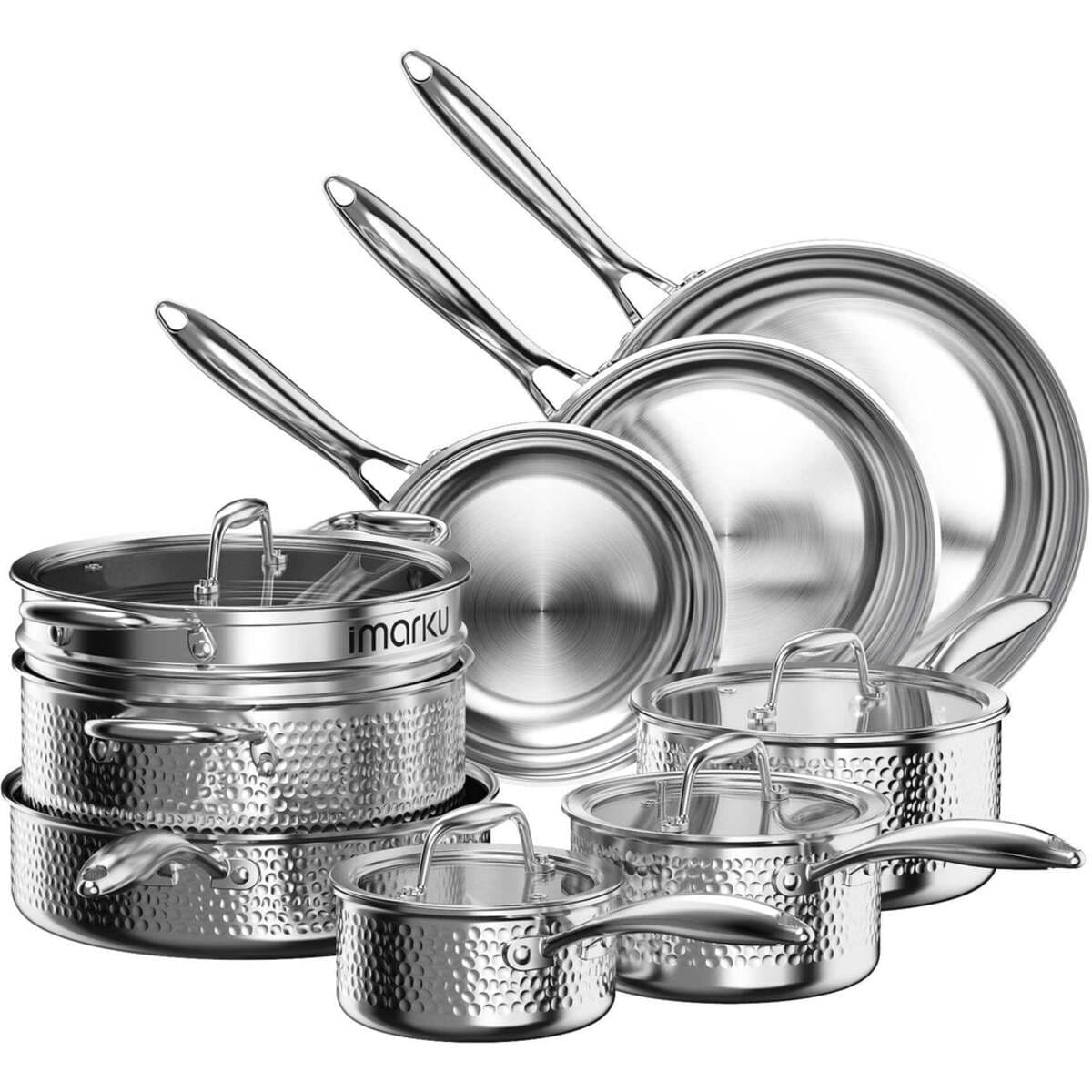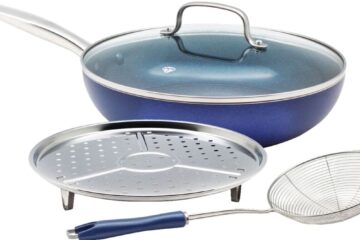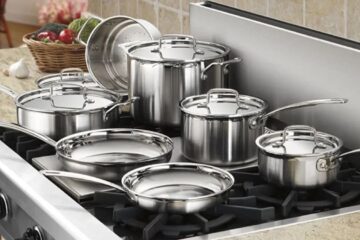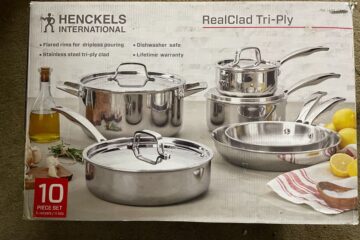Stainless steel cookware is a staple in most kitchens. It is durable, versatile, and can last for years if properly cared for. However, cleaning stainless steel cookware can be a challenge, especially if food has burned onto the surface. Many people are unsure of the best way to clean their stainless steel pots and pans without damaging them.
Fortunately, there are several effective methods for cleaning stainless steel cookware. Some involve using natural ingredients like vinegar and baking soda, while others require specialized cleaning products. By following a few simple steps, anyone can keep their stainless steel cookware looking shiny and new for years to come.
Why Clean Stainless Steel Cookware?
Stainless steel cookware is a popular choice for many home cooks due to its durability and attractive appearance. However, like all cookware, it requires regular cleaning to maintain its quality and performance. In this section, we will explore the reasons why it is important to keep your stainless steel cookware clean.
Firstly, cleaning your stainless steel cookware is essential for hygiene purposes. Food residue left on the surface of the cookware can harbor harmful bacteria and germs, which can cause illness if ingested. By cleaning your cookware thoroughly after each use, you can prevent the growth and spread of bacteria.
Secondly, cleaning your stainless steel cookware can help to maintain its appearance. Over time, stainless steel can become discolored and stained if it is not cleaned properly. By using the right cleaning methods and products, you can keep your cookware looking shiny and new for longer.
Finally, cleaning your stainless steel cookware can help to prolong its lifespan. If food residue is left on the surface of the cookware for long periods of time, it can cause corrosion and damage to the metal. By cleaning your cookware regularly, you can prevent this from happening and ensure that your cookware lasts for many years to come.
Materials Needed
To properly clean stainless steel cookware, it is important to have the right materials on hand. Here are some of the essential items that will help you get the job done:
Non-abrasive sponge or cloth
When cleaning stainless steel cookware, it is important to avoid using abrasive sponges or cloths that can scratch the surface. Instead, opt for a non-abrasive sponge or cloth that is gentle on the metal.
Dish soap
Dish soap is a staple in most kitchens, and it is an essential component of cleaning stainless steel cookware. Choose a mild dish soap that is free of harsh chemicals and fragrances.
Baking soda
Baking soda is a versatile cleaning agent that can be used to clean a variety of surfaces, including stainless steel cookware. It is especially useful for removing baked-on stains and tough grime.
White vinegar
White vinegar is another common household item that can be used to clean stainless steel cookware. It is a natural cleaning agent that is effective at removing grease and grime.
Microfiber cloth
A microfiber cloth is an excellent tool for cleaning stainless steel cookware. It is soft and gentle on the metal, and it won’t leave behind any lint or residue.
Stainless steel polish
If you want your cookware to really shine, you can use a stainless steel polish to give it a glossy finish. Be sure to choose a polish that is specifically designed for use on stainless steel.
Step-by-Step Guide
Cleaning stainless steel cookware can be a daunting task, but with the right techniques and tools, it can be a breeze. Here is a step-by-step guide to cleaning your stainless steel cookware.
Step 1: Pre-Clean the Cookware
Before cleaning your stainless steel cookware, it is essential to pre-clean it. This step involves removing any food particles or debris that may be stuck on the surface of the cookware. To pre-clean, rinse the cookware with warm water and use a soft-bristled brush or sponge to scrub the surface gently.
Step 2: Clean with Dish Soap and Warm Water
After pre-cleaning, it’s time to clean the cookware thoroughly. To do this, use a mild dish soap and warm water. Apply the dish soap to the cookware and use a soft-bristled brush or sponge to scrub the surface gently. Rinse the cookware with warm water and dry it with a soft cloth.
Step 3: Remove Stains with Vinegar
If there are any stains on the cookware, you can use vinegar to remove them. To do this, fill the cookware with equal parts water and vinegar and bring it to a boil. Let it boil for a few minutes, then remove it from the heat and let it cool. Once it has cooled, rinse the cookware with warm water and dry it with a soft cloth.
Step 4: Polish with Olive Oil
To give your stainless steel cookware a shiny finish, you can polish it with olive oil. Apply a small amount of olive oil to a soft cloth and rub it onto the surface of the cookware. This will help to remove any remaining stains and give it a shiny finish.
Tips for Maintaining Stainless Steel Cookware
Stainless steel cookware is a popular choice for many home chefs due to its durability and ability to evenly distribute heat. However, without proper care, it can become discolored, burned, and covered in residue and food bits. Here are some tips for maintaining your stainless steel cookware:
Tip 1: Avoid Abrasive Cleaners
When cleaning stainless steel cookware, it’s important to avoid using abrasive cleaners, such as steel wool or harsh chemicals. These can scratch the surface of the cookware and damage the protective layer, leading to discoloration and corrosion. Instead, opt for gentle cleaning solutions, such as baking soda or vinegar.
Tip 2: Use Soft Sponges or Brushes
To avoid scratching the surface of your stainless steel cookware, it’s important to use soft sponges or brushes when cleaning. Avoid using abrasive pads or brushes, as they can damage the surface of the cookware and leave scratches. Instead, use a soft sponge or cloth to gently scrub away any residue or food particles.
Tip 3: Dry the Cookware Thoroughly
After cleaning your stainless steel cookware, it’s important to dry it thoroughly to prevent water spots and discoloration. Use a soft cloth or towel to dry the cookware, and make sure to remove any excess water from the surface. Avoid air-drying your cookware, as this can leave water spots and streaks.
Tip 4: Store Properly
To prevent scratches and damage to your stainless steel cookware, it’s important to store it properly. Avoid stacking your cookware, as this can cause scratches and damage to the surface. Instead, store each piece separately, and use protective covers or sleeves to prevent scratches and dents. Make sure to store your cookware in a dry, cool place to prevent discoloration and corrosion.
Conclusion
Cleaning stainless steel cookware is an important task to maintain its shine and durability. With the right techniques and tools, it is easy to keep your cookware looking brand new.
One of the most important things to keep in mind when cleaning stainless steel cookware is to always follow the grain of the metal to prevent scratches and streaking. Using a water conditioner or distilled water can also help prevent water spots, especially during the final rinse.
Using vinegar and oil can also be effective in polishing stainless steel cookware. Vinegar can brighten the cookware and get appliances sparkling clean, while an oil buff afterward keeps it shiny.
For tough stains or burnt-on food, using a mixture of baking soda and water can be effective. Simply apply the mixture to the affected area and let it sit for a few minutes before scrubbing with a non-abrasive pad.
Overall, maintaining the cleanliness of your stainless steel cookware is important for both its appearance and longevity. By following these simple tips and techniques, you can ensure that your cookware stays in top condition for years to come.



